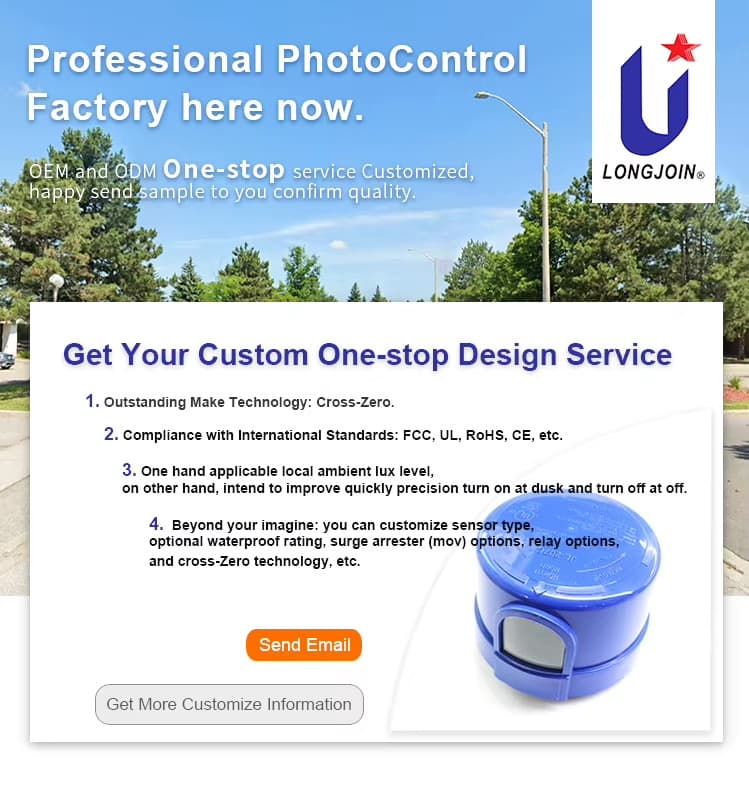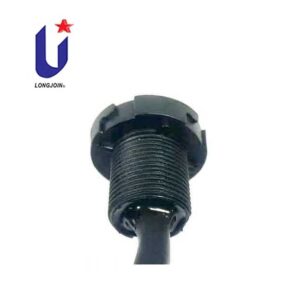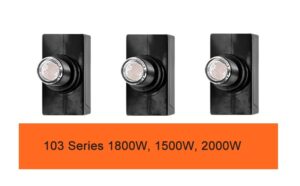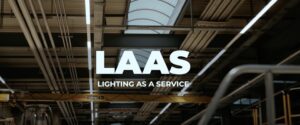Empowering Smart Street Lighting: Insights from NYPA & Signify Collaboration and Our Advanced Photocell Solutions
Introduce
The New York Power Authority (NYPA) and Signify are leading a project called Smart Street Lighting NY. The plan is to replace over 500,000 streetlights in New York State. They’ll use connected LED systems by 2025.
Smart lighting saves energy. It cuts costs, and it makes streets safer too. In this article, we ask the key questions: what lessons does this project offer, how do our photocell sensors align with these needs, and how can cities worldwide apply these solutions?
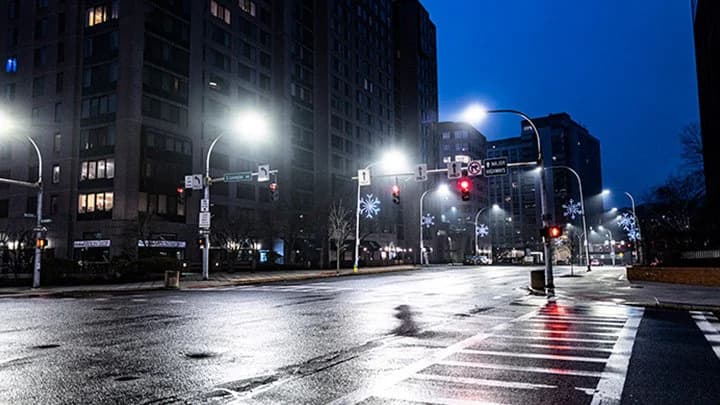
What Industry Trends Does the NYPA & Signify Project Highlight?
Smart lighting projects often look complex. But what makes the NYPA project worth paying attention to?
- Massive Scale Adoption:Over 500,000 LED streetlights are on. Smart lighting has moved from pilots to full-scale infrastructure now.
- IoT Integration:Signify’s Interact City links every streetlight. Teams monitor them remotely, predict repairs, and analyze data.
- Multi-Sensor Street Poles:By adding tilt, noise, and vibration sensors, the poles become part of wider urban safety systems.
- Open Ecosystem:The use of APIs allows integration with emergency services, traffic control, and even environmental monitoring.
These trends highlight why cities now see photocell for street light technology not only as an energy tool but also as a foundation for urban intelligence.
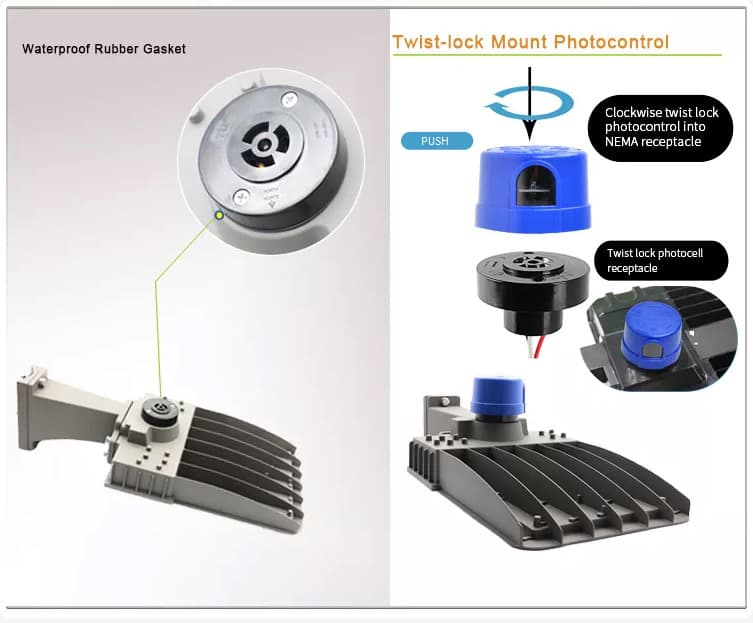
How Do Our Photocell Products Address These Industry Needs?
City managers often ask: Which features make a light photocell sensor reliable for smart projects?
Feature | Why It Matters | Our Advantage |
Sensor Precision | Prevents wasted energy and safety gaps by detecting ambient light accurately | Our photocell lighting sensor reduces false triggers, ensuring consistent dusk-to-dawn control |
Protocol Compatibility | Needed for smart city IoT platforms | |
Standards & Certifications | Required for procurement, safety, and interoperability | UL773, CE, ISO certified, and Zhaga socket ready |
Durability | Outdoor hardware faces heat, rain, and surges | Weather-resistant housings, surge protection, and automatic aging compensation |
Remote Control & Dimming | Essential for adaptive lighting and energy savings | Integrated photocell switch supports dimming and scene control |
This table makes it clear: our solutions are built for both today’s and tomorrow’s smart lighting needs.
Where Can Photocell Sensors Add Value in Smart City Applications?
Urban planners often wonder: beyond streets, where else can photocells deliver real benefits?
- Smart Street Lighting:Our photocontrol receptacle makes plug-and-play upgrades easy on LED poles. It speeds deployment.
- Sustainable Outdoor Lighting:Automatic dusk-to-dawn operation cuts wasted energy. It helps cities meet climate goals.
- Public Safety Applications:Add tilt or noise sensors. Then one photoelectric sensor can serve as a light controller and a safety monitor.
See our case studies on outdoor lighting applications.
What Professional Recommendations Should Buyers Follow?
Choosing the right manufacturers photocell product can feel overwhelming. So what should buyers prioritize?
- Look for Multi-Protocol Support:This ensures compatibility with future IoT platforms.
- Check Certifications:UL773, CE, ISO, and Zhaga socket compliance reduce technical risks.
- Adopt Remote Dimming:Adaptive lighting cuts energy use by 30–40%. Some cities show this (McKinsey, 2024).
- Prioritize Robustness:It has IP65 housing and surge resistance. Automatic aging control cuts repairs and lifecycle cost.
What Are the Cost and Maintenance Benefits of Using Advanced Photocells?
One of the biggest questions decision-makers ask is: how do photocells reduce lifecycle costs?
Category | Traditional Streetlights | Smart Streetlights with Photocell Control |
Energy Consumption | Lights often run longer than needed, wasting energy | Dusk-to-dawn photocell sensors cut energy usage by up to 50% |
Maintenance Frequency | Manual inspections required, high labor costs | Remote monitoring and alerts reduce site visits by 30–40% |
Lifespan of Components | Bulbs and drivers degrade faster with constant use | Adaptive dimming extends lifespan, lowering replacement costs |
Total Cost of Ownership | Higher long-term expenses | Lower TCO through energy and maintenance savings |
This comparison shows why municipalities view smart lighting control with photocells as an investment that pays back within a few years.
How Do Photocells Enhance Safety and Urban Data Insights?
Cities also ask: besides lighting, what other value do photocells and smart controllers bring?
Function | Role in Urban Safety | Photocell Contribution |
Crime Prevention | Well-lit streets reduce crime rates | Photocell street light sensors ensure consistent brightness where needed |
Traffic Management | Accidents decrease with adaptive light levels | Photocells link with IoT systems for traffic-based dimming |
Emergency Response | Faster visibility during incidents | Integration with APIs allows instant brightness control |
Data Collection | Cities need actionable urban data | Photo sensor modules provide environmental and activity data |
The value of photocells extends far beyond switching lights on and off. They join a larger smart lighting system. It helps make cities safer and even smarter.
How Can Photocells Help Cities Transition to Smarter, Safer Lighting?
Here’s the real question. How do these tech features lead to real results for cities?
- Energy Impact:Dusk-to-dawn photocell sensors curb waste. They can cut costs by up to 50% versus legacy lighting.
- Operational Impact:Remote monitoring and lighting control find faults faster. They reduce costly site visits.
- Safety Impact:Integrated sensors make poles multifunctional, providing data on accidents, crime, and traffic.
This is why the NYPA project serves as a benchmark: when photocells are combined with IoT platforms, the result is not only light but a safer, more connected city.
Conclusion
The NYPA and Signify collaboration shows the direction of smart lighting worldwide: connected, efficient, and intelligent. Our photocell sensors meet these requirements with precision, durability, and open-protocol design. For municipalities, integrators, and lighting manufacturers, the lesson is clear: the right photocontrol turns ordinary poles into intelligent assets.
Contact Long-Join for technical documentation and tailored solutions.
External Links:
●https://www.signify.com/global/our-company/news/press-releases/2020/20200618-nypa-partners-with-signify-to-connect-half-a-million-streetlights-for-smart-street-lighting-ny
●https://www.digi.com/solutions/by-technology/zigbee-wireless-standard
●https://en.wikipedia.org/wiki/Narrowband_IoT
●https://www.shopulstandards.com/ProductDetail.aspx?UniqueKey=30842
●https://www.iso.org/certification.html

